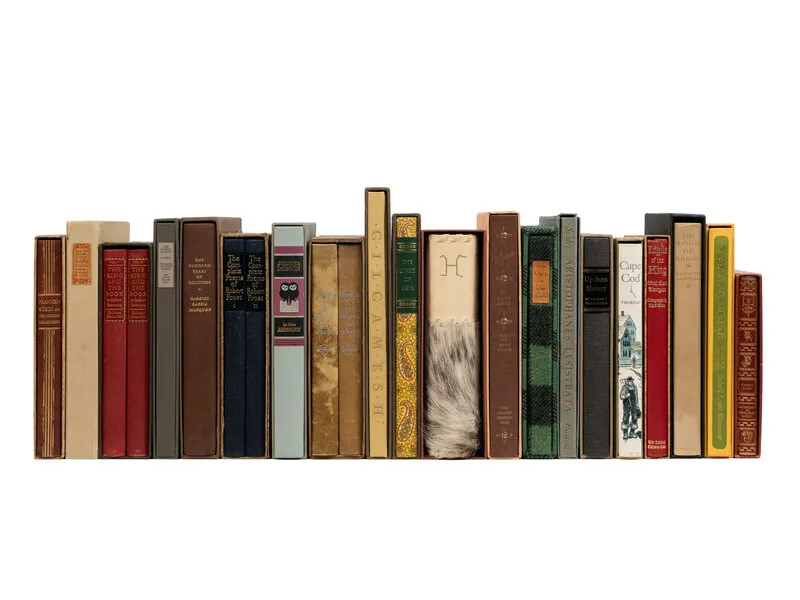
How The Limited Editions Club Turned Rare Books Into Art: The Story of Fine Press Publishing in the Early 1900s
Share
The Moment When Publishing Became Art
In the early 1900s, a quiet revolution changed the world of books forever.
It wasn’t about mass printing or bestseller lists. It was about craftsmanship. It was about turning books — normally everyday objects — into beautiful, collectible works of art.
This era gave rise to fine press publishing. And one company, above all, came to define it: The Limited Editions Club.
Today, collectors, rare book dealers, and literary historians still look back at this moment as the golden age of book design.
What Was The Limited Editions Club?
The Limited Editions Club (often called LEC) was founded in 1929 by a New York publisher named George Macy.
His goal was simple — but ambitious: publish classic works of literature in small print runs, using the highest quality materials, and pair them with original artwork from some of the greatest artists of the time.
Every book was limited. Every book was special. Most were signed either by the artist, the author, or both.
Some of the legendary artists who worked with the Limited Editions Club include:
- Pablo Picasso
- Henri Matisse
- Rockwell Kent
- Arthur Rackham
- Edmund Dulac
For book collectors, this was (and still is) extraordinary. It wasn’t just literature — it was collectible art.
Why Were These Books So Different?
Books produced by the Limited Editions Club were unlike anything mass-market publishers were making.
These editions often featured:
- Hand-set type, letterpress printed
- Handmade or high-quality paper
- Original illustrations commissioned specifically for the book
- Custom slipcases or fine bindings
- Limited print runs, usually 1,500 copies or fewer
- Artist or author signatures
Every detail was deliberate. The materials. The design. The packaging. Even the typography.
This level of care positioned books as luxury objects — meant to be owned, displayed, and preserved.
Other Famous Fine Press Publishers of the Early 1900s
While the Limited Editions Club was arguably the most famous American fine press publisher of its time, it wasn’t alone.
Several other presses contributed to this golden age of book artistry:
| Publisher | Notable For | Origin |
|---|---|---|
| The Heritage Press | Affordable reprints of LEC books | USA (Founded by George Macy too) |
| The Grabhorn Press | Western Americana & fine printing | San Francisco |
| The Golden Cockerel Press | Illustrated classics | England |
| The Nonesuch Press | Literary works in creative formats | England |
| The Gregynog Press | Welsh fine press editions | Wales |
Each had its own unique style, but they all shared a common belief: books could (and should) be beautiful.
Why Collectors Still Value These Books Today
From what I understand, collectors love fine press books from this era for several reasons:
- Scarcity: Limited print runs make surviving copies rare.
- Artistry: Many include illustrations or prints by famous artists, found nowhere else.
- Historical Value: These books capture a moment in publishing history before automation took over.
- Craftsmanship: Materials and printing methods far exceed most modern books.
In the world of rare books, Limited Editions Club titles — especially those signed by artists like Picasso or Matisse — continue to command attention at auctions and in private collections.
The Legacy of The Limited Editions Club
The impact of The Limited Editions Club and other fine press publishers can still be seen today.
Modern private presses, artists, and even luxury publishers owe much to this movement.
At Kadri Books, we believe these books represent more than just literature. They are physical proof that publishing is not just about words — it’s about beauty, creativity, and craftsmanship.
Whether you’re a seasoned collector or someone discovering rare books for the first time, exploring fine press editions from the early 1900s offers a window into a world where books were treated like art.
Frequently Asked Questions (FAQ)
What is a fine press book?
A fine press book is a limited-edition publication produced with high attention to detail, often using hand-set type, luxury materials, and original artwork.
What makes The Limited Editions Club books valuable?
LEC books are valuable because of their small print runs, signed copies, collaborations with famous artists, and exceptional production quality.
Where can I find Limited Editions Club books for sale?
Many rare book dealers, including Kadri Books, offer fine press books like LEC editions. They also appear at auctions, rare book fairs, and specialty bookstores.
Are Limited Editions Club books still being made?
The original Limited Editions Club operated from 1929 through various ownership changes. Some modern projects continue under the LEC name, but the early 20th-century editions remain the most collectible.
